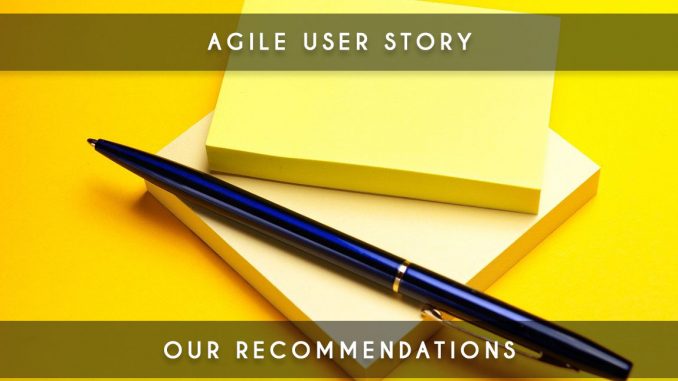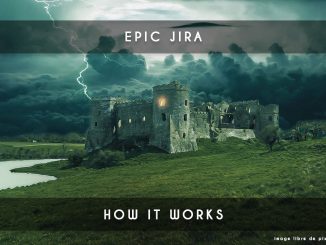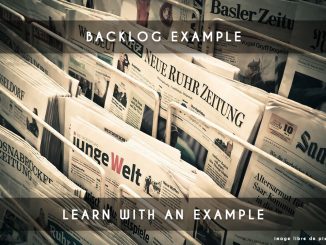
Besides,What is an agile user story? This article will list all the articles we have written about agile user-stories in order to simplify your work.
I will take this opportunity to give you some examples of user-stories and some additional tips. I note today that it is not always easy for new Product Owners to understand how to write user-stories.
Besides, you can watch the agile minute video on the subject:
agile user story video
An agile user story
A user story is a functional request written in order to highlight user needs. It is written in a natural language understood by all the actors of the project or related to it.
To write an agile user story, we use actually a strict format so that all user-stories follow the same rules. The following format is the one we meet in 90% of cases:
As a <persona>, I want <goal/desire> so that <benefit>
Example of agile user stories
Here are some examples of user-stories on an e-commerce site:
- As a customer I want to add a product in my cart
- (and) As a customer I want to pay in credit card
- As a customer I want to receive my product in relay point
Write your user-story from a SMART request
It is interesting to start from a SMART request to write user-stories. You can go to read the article below for more information but a SMART request must be specific, measurable, achievable, relevant and timeboxable.
Article : Create the user-stories from SMART request!
Rédiger sa user story agile
Il n’est pas toujours simple au départ de bien rédiger sa user-story surtout dans certaines applications complexes. Voici des questions à se poser en écrivant ses user-stories.
1 / What is really the need?
It is not always so obvious to define the key user who have need. Why ?
It is not uncommon in companies that applications are written by “business people” who do not really know their users. They make requests thinking well do… But sometimes the need is not real.
So the Product Owner who is an additional intermediary has no information on the actual need or may have a wrong vision of it.
Knowing that the “final customer” is the user of the user-story below seems easy to guess:
"As customer, I want add a product in the cart"
But it will not always be so simple … Let’s go on a more complex example this time.
"As a logistician, I want to click on a button to indicate that an order is delivered"
If this agile user story seems well written at first, it is probably not correct in reality; does a logistician really need to click a button? It is more like an action required to meet a need.
Here is the real need behind this request:
"As a customer, I want to be informed that my order will be delivered so that I'm able to receive it"
Indeed, it is the customer who has the real need to be informed of the delivery of the product and not the logistician who needs to click a button. It is tendentious, I grant you, but it is very important to understand the initial need to know how to write better your user story.
If we focus our energy on the logistician, we risk to forget that it is especially on the customer that we must focus ; so, we will not do a perfect functionality for the customer.
Using “As” is not enough in writing a user-story; it is imperative to understand the real need of the key user as you can see.
2 / Is my agile user story INVEST?
A user-story must really be INVEST to be of good quality:
- I for independent of other user-stories (at least on the current sprint)
- N for negotiable (between the different actors and stakeholders),
- V for value for key users
- E for estimable
- S for sufficiently small (to be developable in 1 sprint)
- T for testable.
Besides, here is an article that talk about this subject that you can read to deepen this topic.
Article around agile user story : What’s an INVEST user story?
Here is an article also to understand how to split user-stories so that they are small enough as the INVEST advises.
Article around agile user story : How to split his user-stories?
Conclusion of agile user story
With this article, you should better understand how to create the user-stories and especially the good questions to ask yourself when you are going to work on it.
Useful link : agile framing use the user stories




3 Trackbacks / Pingbacks